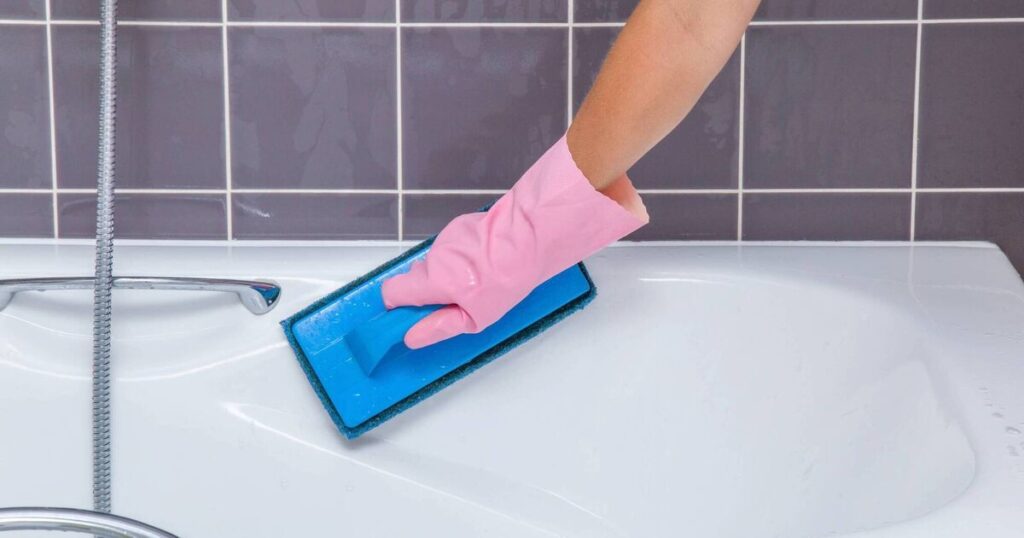It’s where we wash ourselves, but when was the last time you gave your bath a decent deep clean? You may think a regular flow of running water keeps things clean but there’s more dirt lurking in a bathtub than you may expect.
After bathing or showering, you should rinse away any residue immediately. Leftover soap and shampoo as well as oils and dirt from your body can stick to the surface, drying to form grime and soap scum.
Similarly, the items you leave around the bath can harbour bacteria. The pieces to be aware of include bath mats, loofahs, razors and even the shampoo and body wash bottles that remain wet and sit on the surface of the bath – these can trap moisture and soap beneath them, allowing bacteria, mildew and mould to develop in those damp conditions.
An occasional quick cleanup won’t cut it if you’re skipping deep cleaning. In particular, hard water residue can cause stubborn stains if not monitored and cleaned regularly.
First, remove all bottles, mats, accessories and toys from the bath area. These should also be cleaned separately or else you could be returning dirt to your freshly cleansed bath. With hot water, rinse the bath to wash away any loose dirt.
To tackle soap scum and general grime, you can mix together a cleaning paste with bicarbonate of soda (baking soda) and washing up liquid. Mix together a 50/50 ratio of these, with a few drops of vinegar if needed, and apply the paste all over the tub. Focus particularly on stains, around the drain, and where water gathers. Let the mixture sit for half an hour.
Using a non-scratch sponge or brush, work the mixture into the surface. Pay particular attention to corners and any awkward gaps and crevices, as well as around the tap and drain, and also any grout around the area. For hard-to-reach areas, use an old toothbrush to scrub.
Hard water is a common issue in Irish homes and it can cause mineral stains around your tub. If you are trying to remove these, spray them with vinegar and let it sit for 15 minutes before scrubbing.
Another frequent problem caused by the damp atmosphere of a bathroom is mould and mildew. For these, bleach will be the moost effective treatment. Add ne part bleach to 10 parts water and apply this to the mouldy area. Let it sit for 15 minutes before rinsing it away thoroughly.
Once you have finished deep cleaning the surface, rinse off all cleaning agents and residue with hot water. Wipe down the surfaces with a microfibre cloth to dry them and prevent water spots from forming. You can use some glass cleaner on chrome fixtures to restore extra shine.
Don’t forget to give your bathtub’s drain some TLC while you’re cleaning. You can pour baking soda and vinegar down the drain, followed by hot water to dislodge any blockages.
If you still have a slow drain of water, you can use a drain cleaner: a long wire with a small brush attached at the end. Feed the brush end into the drain, twisting and pulling regularly to dislodge debris like hair that may be causing a blockage.
Now that your bath is squeaky clean, you won’t want to return grimy accessories to it. As mentioned above, your bath mat may be harbouring lots of bacteria. While cleaning your bath, you can soak it in vinegar and water to disinfect it. Rinse it and return it to the bath.
Similarly, a shower curtain can become damp and mildewy. Luckily, this is easily cleaned: just pop it into your washing machine with your towels on a gentle cycle to refresh it.
Give those shampoo bottles a clean too before returning them to the area, and if you have any bath toys for the smallies, as these are generally made of plastic, they can be popped into the dishwasher on the top rack to be cleaned.


